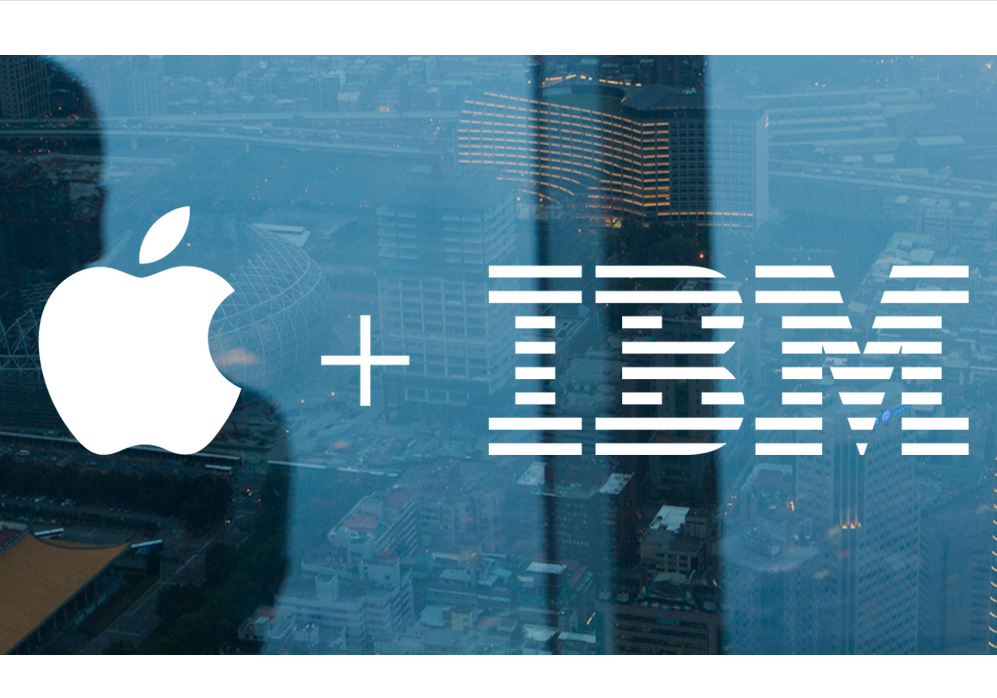The Burgeoning Partnership Launches IBM MobileFirst for iOS

The collaboration, dubbed IBM MobileFirst for iOS, is a suite of applications and managed services for enterprise mobility, cloud services and big data. These are aimed at businesses needing support of the mobility life cycle. Apple and IBM are jointly providing co-developed solutions to customers globally.
Central to the initiative is the intention to create about 100 industry-specific mobile applications exclusively for iPhones and iPads which will be rolled out by the end of 2015. The first mobile apps are aimed at six industries: retail, banking, insurance, financial services, government and airlines.
The two companies claim that the apps and services will draw on the expertise of 100,000 IBM business process consultants and Apple’s user experience and design philosophy. They will be transactional in nature, focussing on “transforming how work gets done” and improving how businesses and specific job roles within industries operate through mobility.
The first 10 business applications relate to the following industries and processes:
- Airlines: pilot flight planning and personalized passenger information for flight crews
- Banking: financial advisory solutions
- Insurance: customer retention and risk advisory applications
- Government: law enforcement and case worker solutions
- Retail: sales assistants and inventory and fulfilment applications
- Telecommunications: field service
IBM and Apple also announced that several of IBM’s customers will be the first to use the new applications, including Air Canada, Banorte, Citi and Sprint.
The unveiling of the first 10 applications is a positive step and will help to silence criticism that the partnership lacks depth and is little more than a PR exercise. The pact has received tremendous attention since its launch, receiving over half a billion Twitter impressions alone according to IBM.
The breadth of the solutions and services on offer is impressive, covering four critical areas of enterprise mobility.
IBM MobileFirst for iOS Apps is a portfolio of semi-standardized, packaged applications across the six industries, plus a set of services for application testing, maintenance and enhancement. Both firms are also incorporating ERP for iOS, a bundle of preconfigured applications for enterprise resource planning on which IBM and Apple have carried out integration work in advance, including enhanced SAP data and analytics. The goal is to build a range of apps that carry about 70% of the standard components needed for reuse, with the remainder customized by IBM or by enterprises according to their specific requirements.
IBM MobileFirst Software and Services for iOS is a range of software, security and integration services that use IBM’s systems integration capabilities as well as much of the back-end infrastructure that powers the applications. This infrastructure includes IBM’s mobile application development platform, enterprise mobility management solutions, analytics software, cloud services and security products.
IBM MobileFirst for iOS Supply, Activate and Manage is a set of device procurement and life cycle management services including global device reselling, hardware leasing, enrolment and activation, ongoing management and help desk support.
AppleCare for Enterprise offers customers a collection of services for managing warranties, onsite support and device logistics for iPhones, iPads and Macs.
The first wave of applications are optimized for IBM’s software and infrastructure — including its big data, enterprise mobility management and cloud services — but customers can deploy IBM MobileFirst for iOS products using competing mobility solutions such as BlackBerry, Citrix, Good Technology, MobileIron or VMware (AirWatch).
Managed services in the enterprise mobility life cycle are becoming increasingly important. As more workflows and processes migrate to mobile over the next three years, and companies become more dependent on mobile applications for critical functions in particular, the combination of trusted and reliable devices, applications, back-end infrastructure and services offered by Apple and IBM will prove attractive.
IBM says it has hundreds of employees who regularly test enterprise apps often several months ahead of each major release of iOS. Unlike for desktop applications, IT departments will need to maintain a reliability of service to customers and employees using mission-critical apps that will be difficult to achieve without the support of third parties like IBM and Apple given the lack of control enterprises have over iOS upgrade cycles.
Details on the collaboration’s pricing, purchasing and engagement model have yet to emerge, including whether small and medium businesses will be targeted. However, in our view, enterprises requiring end-to-end services now have a single, reliable place to go.
We believe the combination of Apple and IBM is a lethal one, on paper at least. Apple and iOS have become the top mobile device manufacturer and mobile operating system among enterprises in the US and Western Europe; Apple leads in design and user experience know-how. IBM is the top provider of enterprise IT solutions and services, an expert in business process re-engineering, managed services, software development, security and analytics. IBM MobileFirst for iOS has the potential to radically reshape the direction of enterprise computing in the coming years.
Attention now turns to the competition. HP and Samsung have made recent announcements, but most competitors remain quiet by comparison, including Accenture, BlackBerry, CSC, Fujitsu and Microsoft. We expect some equivalent moves in early 2015.

 Twitter
Twitter
 Facebook
Facebook
 LinkedIn
LinkedIn
 Email
Email